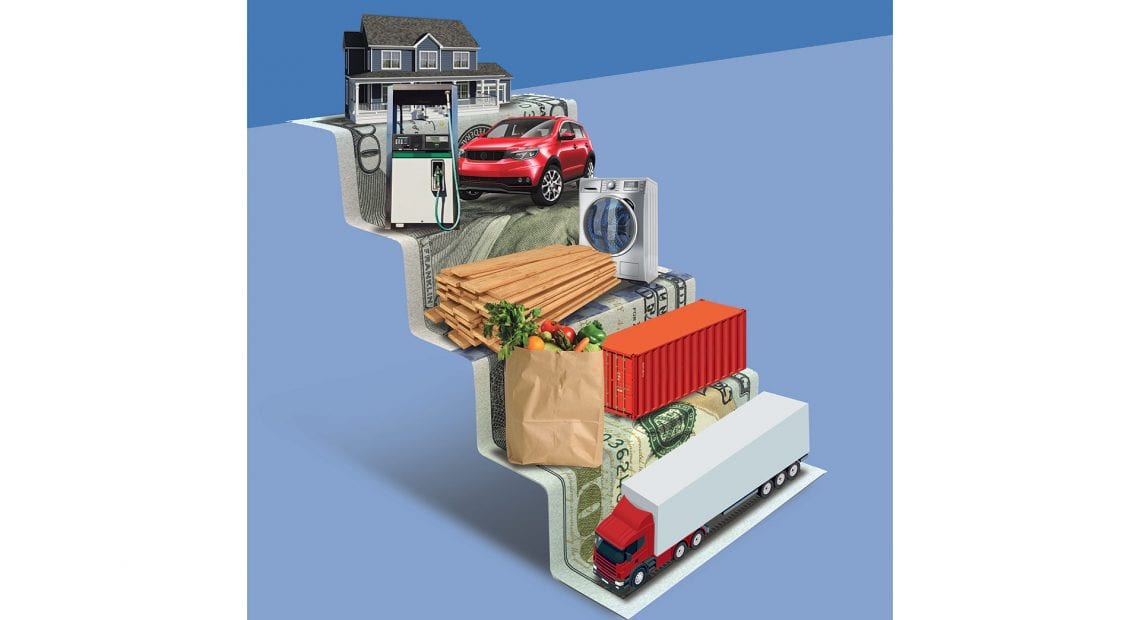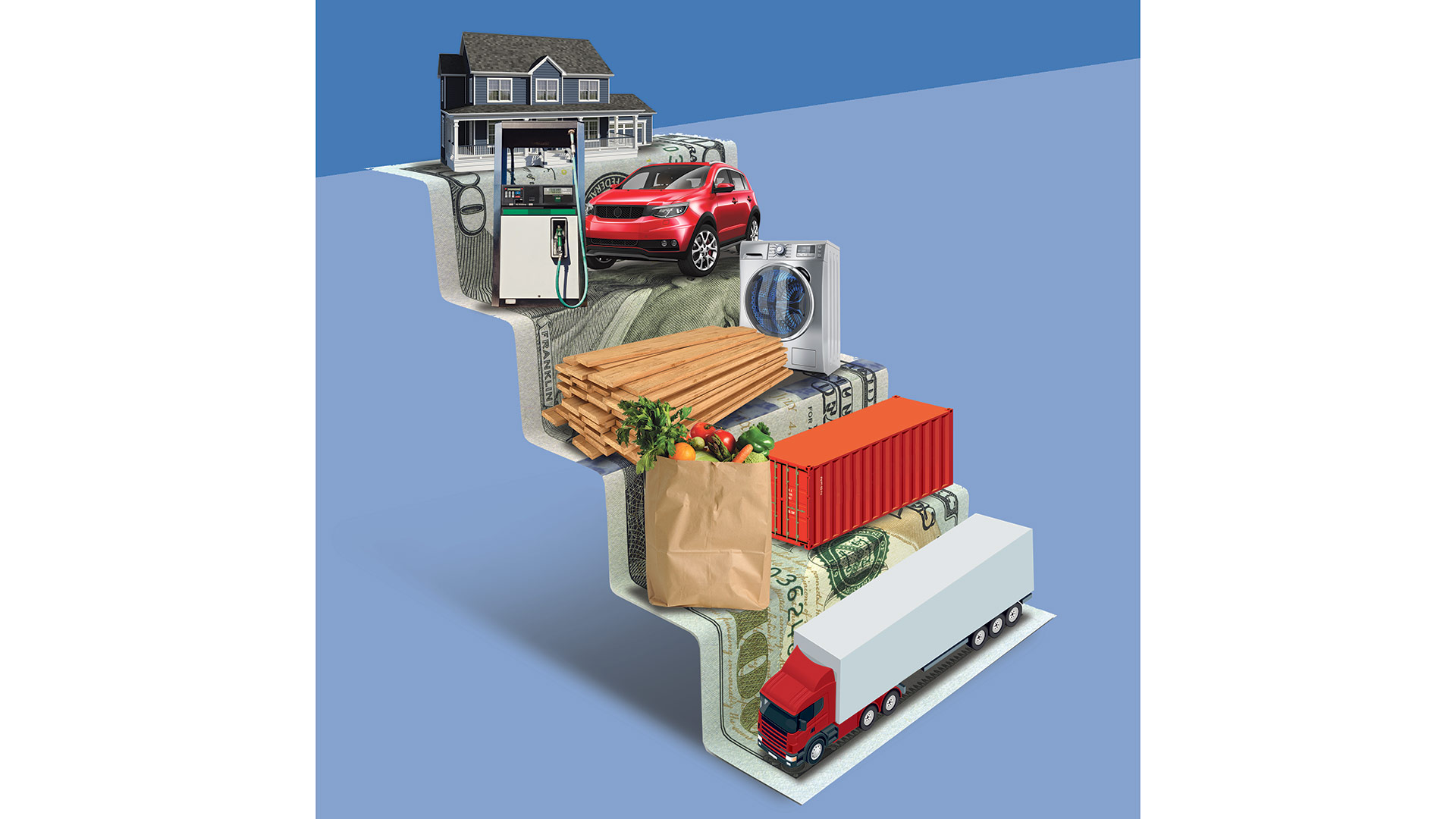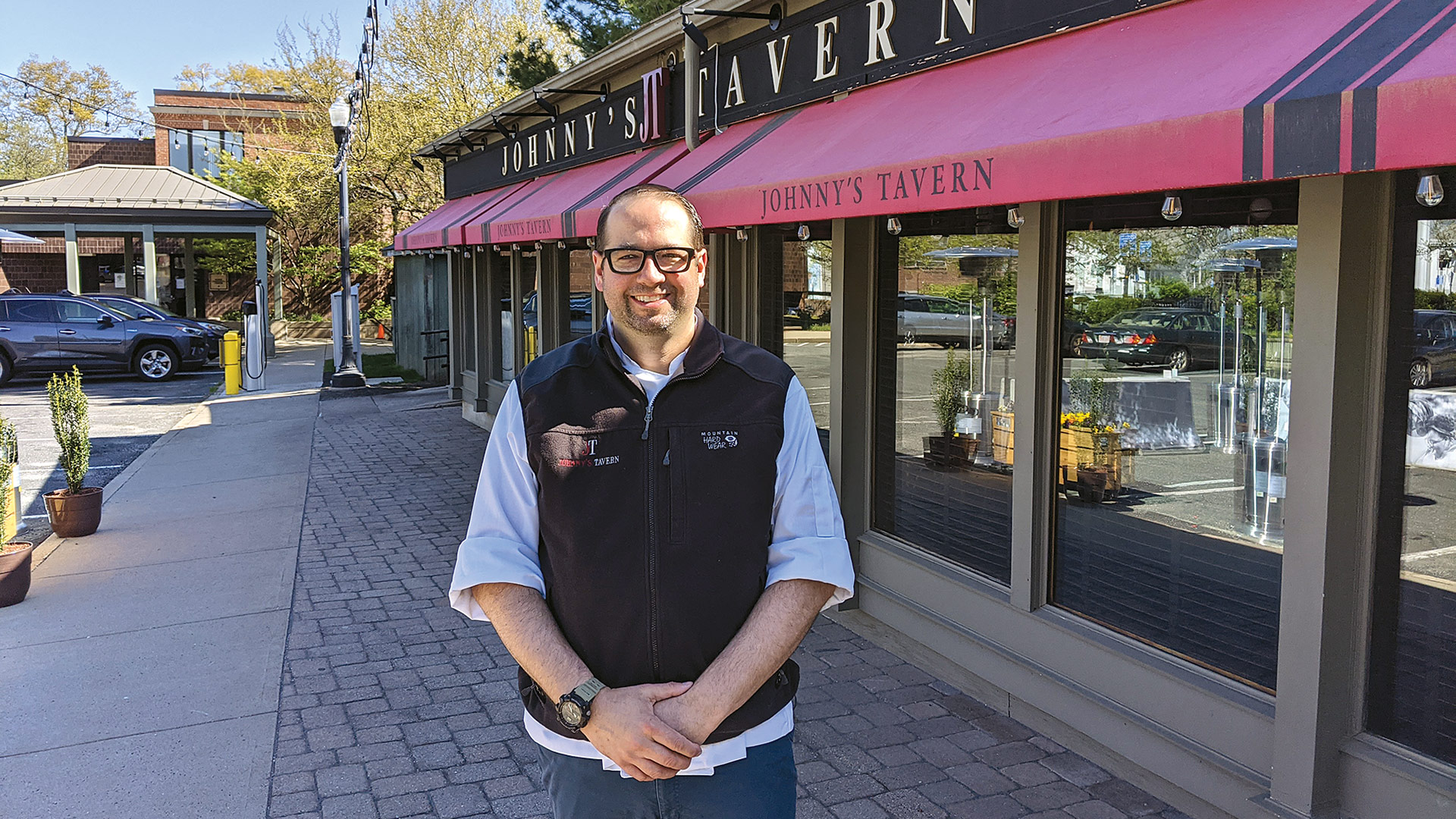Critical Condition

An “inflection point.”
That’s what Dr. Robert Roose says hospitals have reached when it comes to their bottom lines and the ongoing challenge of making ends meet at a time when revenues continue to fall and expenses continue to rise.
Hospitals have perpetually struggled from a fiscal standpoint amid continually rising prices, the need to constantly upgrade technology and innovate, and reimbursement rates from payers that have historically been below 80 cents on the dollar, Roose said. But trends and conditions that existed before the pandemic have only been exacerbated over the past three years, and now, hospitals are at a critical, and extremely challenging, crossroads.
“There’s no way to sugarcoat it — hospitals and health systems across Massachusetts, and across the majority of the country, are finding themselves struggling in many regards, and at an inflection point where there are going to need to be continued efforts to support hospitals, or there will continue to be systems and hospitals that remain in distress,” said Roose, chief administrative officer at Mercy Medical Center in Springfield, part of Trinity Health Of New England.
He quantified the situation by noting that Mercy is on a path to lose roughly $25 million for the fiscal year that will end in June, about the same amount as last year.
“There’s no way to sugarcoat it — hospitals and health systems across Massachusetts, and across the majority of the country, are finding themselves struggling in many regards, and at an inflection point where there are going to need to be continued efforts to support hospitals, or there will continue to be systems and hospitals that remain in distress.”
Dr. Robert Roose
“It will be challenging to persist with the current models that are in place in the same ways that we have in the past,” Roose went on. There are a multitude of reasons for that, but the challenges remain significant, and the pathways forward are going to require multiple initiatives and ongoing support from a variety of different angles.
Dr. Lynette Watkins, president and CEO of Cooley Dickinson Hospital, an affiliate of Mass General Brigham, agreed, noting that COVID put the challenges that all hospitals are facing under a brighter spotlight.
“The past three years have been particularly challenging,” she said, citing everything from staffing issues to the aging of the population and the pressures they put on hospitals. “What COVID laid bare is that all of these issues are there, and that it’s incumbent on us to be creative, accelerate the solutions, and leverage a lot of the tools that we were in many ways reticent to use, such as telehealth and virtual visits.
“While this situation has challenged us, it has also provided us with an opportunity to think differently, to treat patients differently, to engage differently — with our patients and with the community,” Watkins went on, adding that she and her team at CDH are working to taking full advantage of that opportunity.
Spiras Hatiras, president and CEO on Holyoke Medical Center (HMC), concurred. In remarks made to BusinessWest for its annual Economic Outlook, he spoke of both challenge and opportunity, on several fronts, but especially when it comes to workforce issues.
The ongoing workforce crisis, while it has impacted all sectors, has put healthcare providers, and especially hospitals, at an extreme disadvantage, especially when it comes to nursing and the need to fill vacancies with contract or ‘travel’ nurses, which can cost two or three times what a staff nurse might, Hatiras noted.
“In healthcare, there is a great deal of concern, and the most concerning part is the continuing shortage of personnel, which has created this market for temporary staffing at rates that are truly outrageous,” he said. “To put things in perspective, we have about 20 nurses on temporary staff that we get through agencies. Those 20 nurses, on an annual basis, cost us $5 million; each nurse costs us $250,000 because the rates are exorbitant — the nurses get a lot of money, but there’s also a middleman that makes untold amounts of money from this crisis.
“As a nation, the federal government is doing a lot of things — they did some things with railroad workers, they’re helping Ukraine, they’re talking about a lot of things. They should have stepped in and regulated this and said, ‘the pandemic created a tremendous amount of shortage; we cannot allow private companies to go out and profit from that shortage of staffing and bring hospitals to their knees.’ With all this, it’s going to be very difficult for hospitals to cope, and that’s why all our strategy centers around finding a way to attract nurses here.”
For this issue, BusinessWest takes an in-depth look at the fiscal challenges facing hospitals today, and what must happen for these institutions to weather this severe storm.
Dollars and Sense
When asked how hospitals arrived at this inflection point, as he called it, Roose said it was a combination of factors, but, as he and others noted earlier, it comes down to an exacerbation of, to borrow an industry term, some pre-existing conditions.
These include a trend toward outpatient, rather than inpatient, care, which certainly impacts overall revenues, and also shortages on the workforce front, which increase the cost of doing business in many ways, and sharp rises in prices of … well, just about everything, from medications to PPE.
“What COVID laid bare is that all of these issues are there, and that it’s incumbent on us to be creative, accelerate the solutions, and leverage a lot of the tools that we were in many ways reticent to use, such as telehealth and virtual visits.”
Dr. Lynette Watkins
“We’ve been dealing with the aftershocks of one of the most significant public-health crises of our time,” Roose explained. “And it occurred at a point where many shifts in healthcare were already underway, including a shift from inpatient care toward the delivery of care in a lower-cost outpatient, ambulatory setting where the trends of consumers, our patients, were beginning to change, but where the reimbursement for those services had not been able to keep up with those changes. This was layered on top of an existing healthcare-workforce shortage.
“So, the pandemic caused a significant challenge amidst what was already several headwinds that were providing stiff challenges for smaller hospitals across the country to overcome,” he went on, “forcing them to transform, to look differently, to meet those challenges and the needs of our community.”
Elaborating, he turned the clock back to late 2019 for perspective. He said that there was already significant movement in how healthcare was being delivered. More services were being provided in settings outside hospitals, he explained, with surgeries taking place in outpatient, ambulatory settings. Meanwhile, insurance companies were adjusting as well, covering certain types of procedures, such as joint replacements, only if they took place in those lower-cost settings.
“With that, inpatient volume was beginning to decline by a few percentage points,” Roose said, adding that those shifts were beginning to accelerate when the pandemic hit. Overall, there has been movement away from the fee-for-service model that had dominated healthcare delivery for decades and a shift toward promoting wellness, he explained, but not enough movement to shelter hospitals, especially smaller community hospitals, from those headwinds he described earlier.
“It has certainly not kept pace with the dramatic impact on volume and the lack of reimbursement for fee-for-service care that has occurred to make up that gap,” he went on, adding that staffing shortages already existed before the pandemic, but they, too, were exacerbated by COVID and its many side effects.
Watkins agreed, and, like others we spoke with, she said revenues have certainly improved since the depths of the pandemic, but they are still not at pre-COVID levels.
And there are many other forces at play that are challenging hospitals, she added, including a shortage of workers at post-acute facilities such as nursing homes, which often leaves patients who are otherwise ready for discharge with no place to go, putting more pressure on hospitals.
“We have two, three, or sometimes more patients who are ready for medical discharge, but when we don’t have a place to send those patients, so they stay with us,” Watkins said. “And that means that some patients who need to in an acute-care facility are in the emergency room or cannot get in; that’s been a huge, huge challenge.”
Work in Progress
One of the factors greatly impacting hospital finances is the ongoing workforce crisis, which has certainly increased the cost of providing care. Roose told BusinessWest that, while Mercy’s overall workforce is down perhaps 20%, due to a variety of factors, its workforce costs are still 7% to 8% higher than before the pandemic.
Indeed, with many positions, not just nurses, hospitals have had to rely on contract employees, which are considerably more expensive than those on staff.
“In healthcare, there is a great deal of concern, and the most concerning part is the continuing shortage of personnel, which has created this market for temporary staffing at rates that are truly outrageous.”
Spiros Hatiras
But there are other factors as well, said Watkins, including additional overtime, bonuses needed to attract job candidates, shift bonuses, and more.
“It’s a huge challenge, and it significantly affected our financial performance, as well as that of other systems in the Commonwealth and across the country,” she said. “And we have to make sure that we are staffed to take care of the patients here that are sicker and that are staying longer.”
Elaborating, she explained that Cooley Dickinson used very few contract nurses prior to the pandemic, but the need for such personnel has risen dramatically due to retirements, burnout, and individuals simply leaving the profession to do something else.
These forces have left hospitals to fill the gaps as best they can and, for the long term, focus energies — or even more energies, as the case may be — on attracting and retaining personnel across the board.
Indeed, Hatiras told BusinessWest that closing the staffing gap is critical because it will bring down the overall cost of doing business and help hospitals cope with lower amounts of COVID relief and revenue levels still below those from before the pandemic.
“With ARPA funds drying up, we’re going to have pull ourselves up by our bootstraps. So our emphasis is on closing the staffing gap,” he said. “If we can do that, and not bleed money on the expense side, I think we’ll be OK; I think we’re poised to have a good year, as long as we’re able to attract nurses here.”
Elaborating, he said closing this gap involves making HMC a preferred place to work, one where applicants with choices will want to go — and hopefully stay, thus reducing the high cost of continually filling vacancies.
“We’re doing OK because we had to respond to what was going on in the market by creating even more attractive reasons for coming here — we raised our rates, we’re enhancing benefits, and at the same time, we’re looking at economic assistance for the lower-earning employees,” he said. “Where it’s more difficult is with the professionals because the dollars are significantly more, so competing just on price is difficult. The key for success — what keeps people here and makes them come here — is the culture of the place, so we put a tremendous amount of effort in the 10 years I’ve been here on creating a good culture. Now, it’s become a differentiator, and we’re pushing it even more. We’re an employer that listens to employees, responds to their needs, and cares. That’s what people want.”
Roose concurred, and told BusinessWest that the recent challenges that hospitals have faced have put even more emphasis on the importance of people in the overriding task of providing quality care to patients — and the overall success of a provider.
“Never has it been more apparent, and critical, to realize that people are the vehicles through which we deliver healthcare,” he said. “We do not deliver services that can be provided by machines; we’re reliant upon the great skills of care providers — and we don’t take that lightly.”
Bottom Line
Moving forward, Roose said, as hospitals cope with these various challenges — and, again, there are many of them — state and federal governments need to step up and continue to provide needed support.
“The ARPA funding and other sources of relief through the pandemic and beyond, which is greatly appreciated, is not enough to close the gap from the challenges that we have encountered,” he noted. “The cost structure for delivering care has increased so dramatically, the models for fee-for-service care have not shifted quick enough, and the rates from commercial and other payers has not kept up with inflation.
“So even with all that support, hospitals like Mercy Medical Center are expected to lose about $25 million this year, which is very similar to what it was the year before, and Trinity Health Of New England lost $65 million in fiscal 2022 from operations,” he went on. “And that puts incredible stress on hospitals.”
Indeed, it does, and these losses, and the forces behind them, explain why hospitals are at an inflection point, and why change is needed if they are to move from critical condition fiscally to something far more sustainable.















